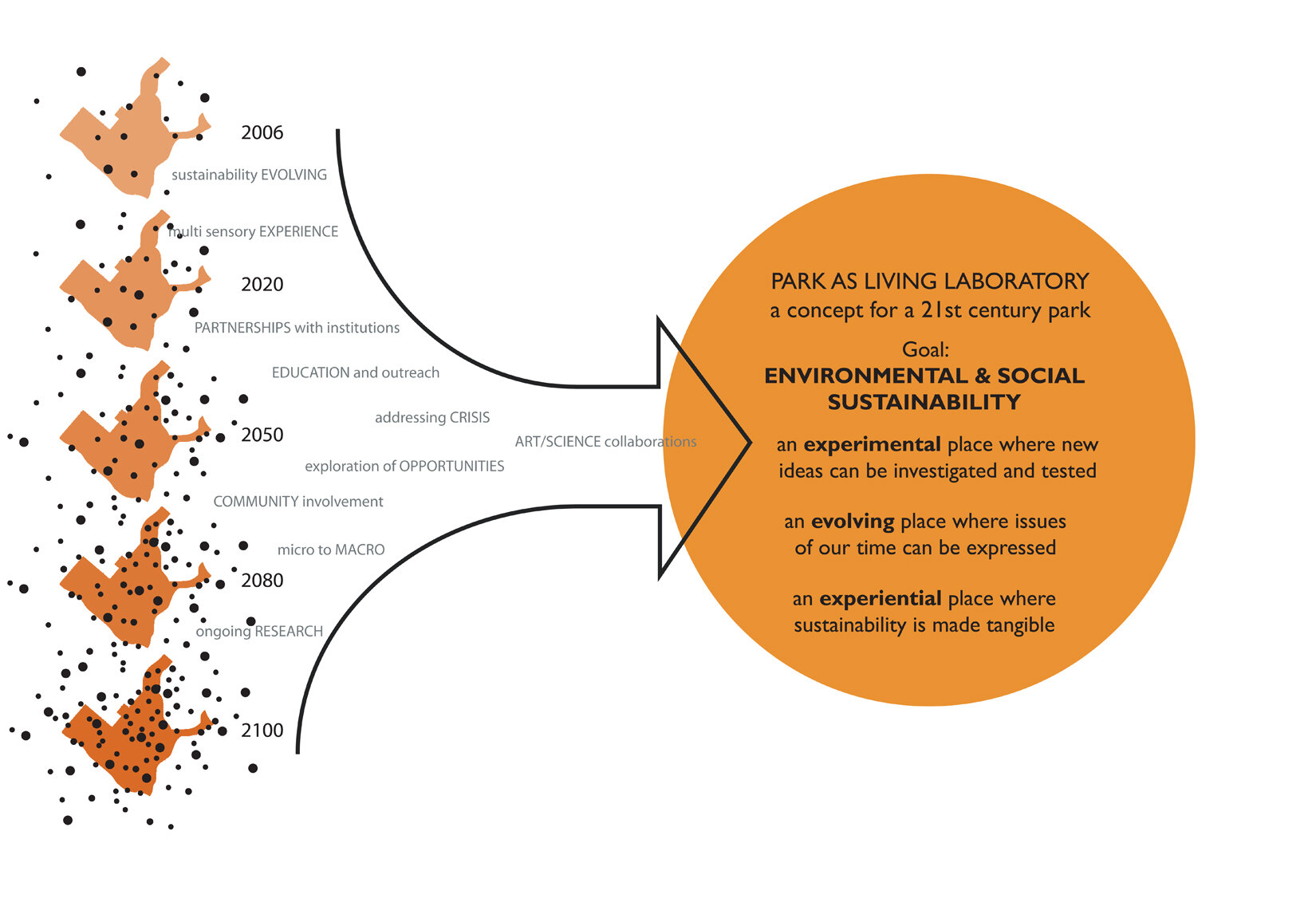Orange County Great Park, Park as Living Lab, 2005
proposal
Nineteenth century urban parks were conceived of as redemptive oases, the lungs of congested cities – places for pleasure and activity, as well as quiet reflection. In our own time, city parks offer more than relief from urban life, they offer new ways to think about the interface between the human and natural world. Park as Living Laboratory is a program that explores that critical interface. It creates opportunities to ask a fundamental question, the most urgent of our time: How can individuals understand their roles in sustaining the fragile environment in which they live?
Mary Miss developed Park as Living Laboratory during the master planning for the Orange County Great Park in Irvine, California. Miss and landscape architect Ken Smith were principal designers of the competition-winning scheme for the 1,300-acre park. The team included environmental ecologists Steven Handel, architect Enrique Norton, landscape architect Mia Lehrer, environmental engineers Buro Happold and Fuscoe Engineering.
Artists will lead the effort to establish Park as a Living Laboratory, using art to make abstract ideas experiential and to awaken curiosity about energy, water, history, and social interactions. Experimental in nature, the program will evolve over time. All communities will have an opportunity to deepen their understanding of the spirit of a place and to assume responsibility for its stewardship.
A Research and Residency Center is central to the Park as Living Laboratory program: It will be a place where artists can collaborate and engage with botanists, hydrologists, biologists, social scientists, environmental ecologists, sociologists, and anthropologists. Through these collaborations, artists will be able to investigate issues such as storm water run-off, to design ways to demonstrate different types of alternative energy in the park, or to engage people in a public space who have not been previously accommodated. The work might take the form of prototypes, temporary installations, as well as permanent works.
Over time, Park as Living Laboratory was to become a place where something new is always expected, where the future is envisioned.





